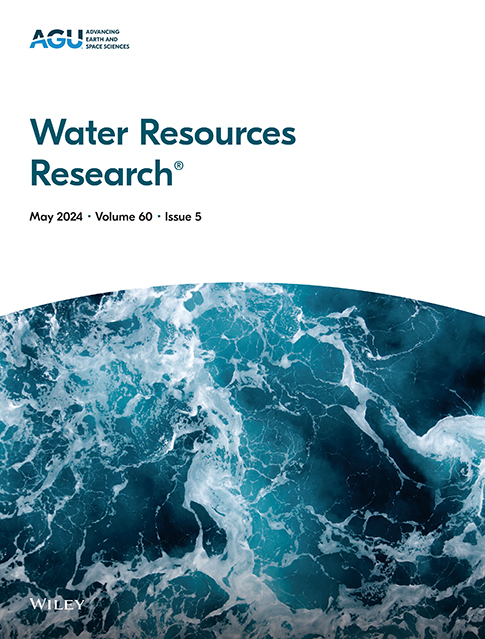Propagation From Meteorological to Hydrological Drought: Characteristics and Influencing Factors
IF 4.6
1区 地球科学
Q2 ENVIRONMENTAL SCIENCES
引用次数: 0
Abstract
Meteorological droughts can reverberate through the water cycle, impacting water resources, ecosystems, agriculture, and socio-economic sectors. Despite this, there remains a scarcity of studies delving into the transition from meteorological to hydrological droughts and the influencing factors operating at the event level. Using long-term observations spanning nominally from 1979 to 2017, we identified and matched meteorological and hydrological droughts based on standardized drought indices across 1089 catchments globally, and examined the characteristics of drought propagation and their determinants at both catchment and event scales. Our analysis reveals that, at the catchment scale, drought severity weakens in approximately 65% of catchments, while intensity experiences a decline in 96% of catchments during the propagation. Moreover, we find that the propagation ratio of severity (or intensity) is significantly and negatively correlated with the severity (or intensity) of meteorological droughts. This implies that major drought events tend to undergo more substantial attenuation in severity (or intensity) during propagation compared to minor droughts. This finding is also obtained at the event scale. Moreover, we find that the event-scale drought propagation ratio (for both severity and intensity) tends to be higher (indicating less attenuation) in catchments characterized by larger seasonal precipitation variation, higher snowfall fraction, steeper slopes, or larger soil water holding capacity. Conversely, it is lower (indicating more dampening) in catchments with dense vegetation cover. These findings offer crucial insights into drought propagation dynamics across catchments globally, thereby informing the development of more effective drought monitoring and management strategies.从气象干旱到水文干旱的传播:特征及其影响因素
气象干旱可以通过水循环产生反响,影响水资源、生态系统、农业和社会经济部门。尽管如此,深入研究气象干旱向水文干旱的转变及其在事件水平上的影响因素的研究仍然很少。利用1979 - 2017年名义上的长期观测数据,基于标准化干旱指数对全球1089个流域的气象和水文干旱进行了识别和匹配,并在流域和事件尺度上研究了干旱传播特征及其决定因素。分析表明,在流域尺度上,约65%的流域在繁殖过程中干旱程度减弱,96%的流域在繁殖过程中干旱强度下降。此外,我们发现严重程度(或强度)的传播比与气象干旱的严重程度(或强度)呈显著负相关。这意味着,在繁殖期间,与轻微干旱相比,严重干旱事件的严重程度(或强度)往往会有更大幅度的衰减。这一发现在事件尺度上也得到了证实。此外,我们发现,在季节降水变化较大、降雪量较大、坡度较大或土壤持水量较大的流域,事件尺度干旱传播比(严重程度和强度)往往更高(表明衰减较小)。相反,在植被茂密的集水区,它更低(表明更多的阻尼)。这些发现为了解全球流域的干旱传播动态提供了重要见解,从而为制定更有效的干旱监测和管理战略提供了信息。
本文章由计算机程序翻译,如有差异,请以英文原文为准。
求助全文
约1分钟内获得全文
求助全文
来源期刊

Water Resources Research
环境科学-湖沼学
CiteScore
8.80
自引率
13.00%
发文量
599
审稿时长
3.5 months
期刊介绍:
Water Resources Research (WRR) is an interdisciplinary journal that focuses on hydrology and water resources. It publishes original research in the natural and social sciences of water. It emphasizes the role of water in the Earth system, including physical, chemical, biological, and ecological processes in water resources research and management, including social, policy, and public health implications. It encompasses observational, experimental, theoretical, analytical, numerical, and data-driven approaches that advance the science of water and its management. Submissions are evaluated for their novelty, accuracy, significance, and broader implications of the findings.
 求助内容:
求助内容: 应助结果提醒方式:
应助结果提醒方式:


